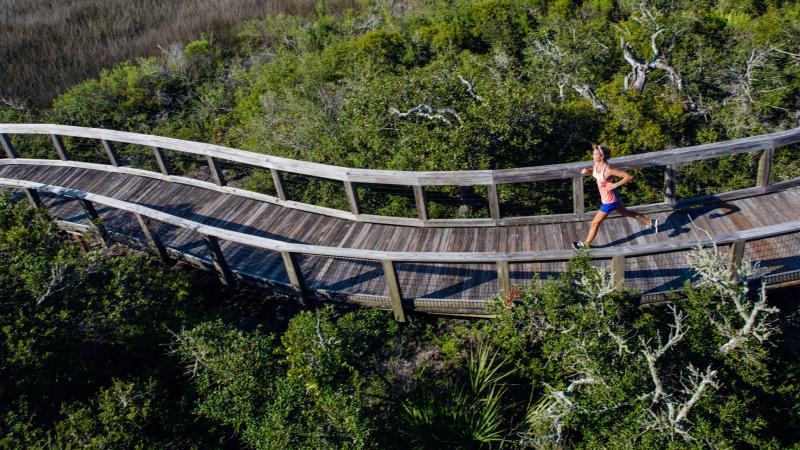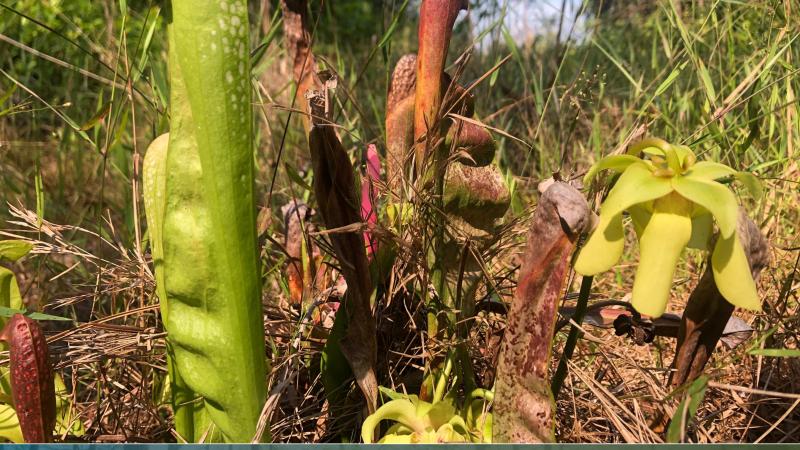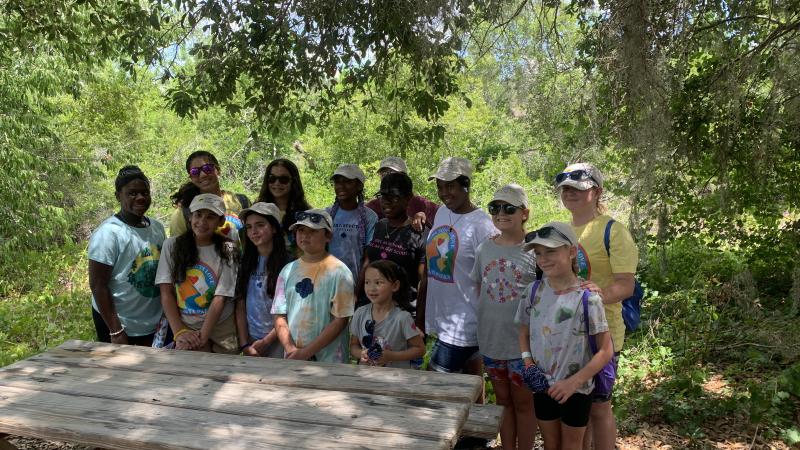Trails at De Leon Springs

The Monkey Island Trail winds through an area that was the background for a themed “jungle cruise” during the park’s days as a kitsch 1960s tourist attraction. The short trail leads walker to Monkey Island, which was home to wild monkeys brought here to enhance the park’s jungle image.
The Wild Persimmon Trail is a great way to see the ecologically-rich environment created by the spring run. This 4.5-mile trail weaves through habitat shared by deer, wild turkey, bobcats, and Florida black bears. The park’s trails are the best way to experience the area’s abundant animal and plant life.
Wading birds such as herons, egrets and ibis stalk their prey down river, while coots and ducks dive for dinner and ospreys soar overhead. Alligators, otters and manatees are common. Above the spring is a hydric hammock, a forest of trees and plants that flourish in wet conditions. The park’s forested areas are dominated by red maples, sweet gums, magnolias, cabbage palms and water hickories and filled with the sounds of woodpeckers and songbirds.
Ferns, wildflowers and vines cover the ground. The endangered yellow anise tree is abundant here. Non-native ornamental plants such as azaleas and various palm species were planted between the 1930s and 1960s near the trails and in the parking lot. The azaleas bloom throughout the park in early spring. The paved nature trail leads to “Old Methuselah,” a huge bald cypress that is more than 500 years old.
The trails at De Leon Springs State Park are a great example of the variety of ecosystems that can exist in one area in Florida. Exploring the trails will show you the living beauty and history of the park.


